Functional rehabilitation
As practitioners we are continually dealing with dysfunctional musculoskeletal systems. Typically dysfunction develops and is perpetuated... Read Article

DOMS (Delayed onset muscle soreness) is soreness normally felt in muscles for a few days after strenuous exercise. To recover properly you need adequate sleep, rest, hydration and nutrition. According to scientific studies the two best therapies to prevent and treat DOMS are:
Several other therapies such as Ice/cold, contrast baths, compression garments and active recovery can help, but the benefits are small and inconsistent.
In this article we will briefly discuss why you get DOMS, what your muscles need to recover, and how each of these therapies can help. We’ll then show you how to combine these to effectively reduce your own DOMS.
Why you get DOMS after sports or a workout
What your muscles need to do to help recover faster
The basic things you need to do to help reduce DOMS
The therapies you can use to help your muscles recover
Summary and recommendations
Professionals
References
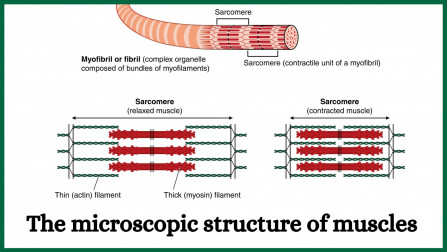
As this diagram shows your muscles are made up of microscopic fibres. Strenuous exercise will damage some of these fibres, and you will also get a build up of metabolic wastes and chemicals that result from the breakdown of damaged tissues. You’ve probably noticed too that your muscles tend to tighten after exercise. This causes tension on the damaged fibres and puts pressure on blood vessels restricting blood flow. It’s a combination of fibre damage, the build up of wastes and break down products, plus the reduction of blood flow that causes the soreness.
As well as soreness the strength and endurance of your muscles will be limited until fully recovered.
Knowing why your muscle get sore, it's easy to see what any therapies need to do to help them recover. Anything you do to help reduce DOMS should do one or more of the following.
Now, lets look at the things you can do that help do that.
Before sport or strenuous exercise it is advisable to warm up properly using light exercises and stretching. This helps prepare your muscles for exertion and will reduce the risk of injury
Your muscles need adequate sleep and rest to recover.
There’s a lot of advertising and editorial about dietary supplements to help recovery. It’s big business. We are not experts in supplements, but the basics principles of physiology and biochemistry tells us that the levels of those things in your body is regulated by a principle called homeostasis. I'll give a couple of examples, and because of this we make the following recommendations.

Homeostasis is your body’s inbuilt mechanisms to regulate it’s internal environment. As an example, if you are slightly dehydrated your body will reduce fluid loss, but if you have too much fluid your kidneys will expel it. This is why we recommend you replace fluids with slightly more than you need.
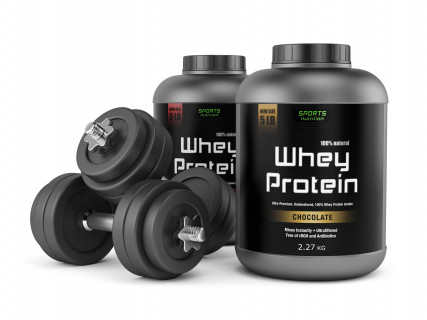
In general, your body will take what it needs and expel the rest. In the case of proteins, these are first broken down into basic amino acids. If the body has too much of an amino acid it further breaks it down, salvaging the usable part. The part that is broken off is actually toxic for your body, so must be expelled. While there may be some short term gain by overloading with some supplements, homeostatis says that any excess will be converted to expensive urine.
As we mentioned at the start there are two therapies that clinical trials have shown to be excellent at helping reduce post exercise soreness and speeding recovery. These are:
In addition there are several therapies that may help a bit, plus one that has no benefit at all. Lets look at these therapies.
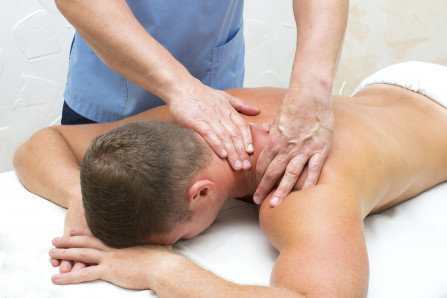
Manual massage therapy has been shown in clinical trials to give good results in reducing post exercise soreness and speeding recovery (1–5). Likely the main benefit would be from the squeezing and mechanical pumping effects of the massage increasing blood flow, flushing wastes and bringing in fresh nutrients and oxygen.
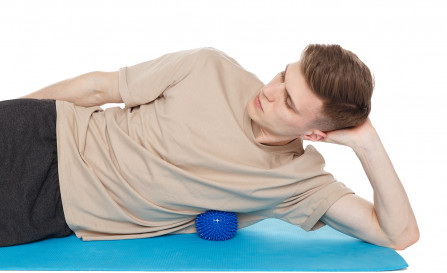
This does not include the use of foam rollers
As discussed in our article on foam rollers, these are generally far less effective than professional massage therapy, and the results of using them in clinical trials is no where near as good. There are a host of reasons, but in summary professional massage therapy is performed by skilled knowledgeable therapists, usually on a client relaxed lying on a table. On the other hand foam rolling is usually done by people without this level of skill and knowledge, and muscles are often tightened in an attempt to adopt the correct position.
Like manual massage, vibration massage is also shown to give very worthwhile reductions in pain and to speed recovery (1,5–13) . Science shows that vibration massage relaxes muscles and increases blood flow, plus in addition it has some quite remarkable additional effects.
For more details on these effects please see our article The scientifically proven effects of vibration massage- with clinical applications.
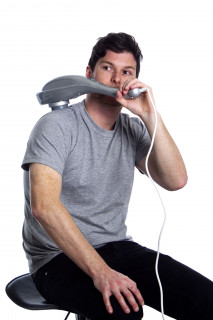
Self massage using vibration massagers
The big advantage of vibration massage is that it can easily be self applied. There is no special skill needed. Whereas self applied manual massage (such as foam rollers) requires skill and knowledge, all one needs to do is to place the vibrating pad of a massager over the muscle and let the vibrations penetrate. Without needing the physical pressure and penetration vibration massage is also much safer.
For how to choose an quality massager that will do a great job and that you will be extremely happy with please see our article How to choose a massager, or you can go straight and check out our economical, easy to use professional standard machines: the General Purpose Massager or our Ultimate Quad Head Massager.
Clinical trials have shown that each of the following has only marginal or inconsistent benefits. The first three can involve considerable effort, discomfort or expense for their little benefit. However, the last (active recovery) is easy to do and if done properly should help.
Cold/Ice therapy is cooling the body down after exercise, such as using an ice bath. It is said to reduce swelling and inflammation. Clinical trials have only shown that this therapy gives a small and inconsistent reduction in post exercise soreness (2–4,14).
Contrast baths involve alternating between hot and cold baths. Clinical trials have shown these to produce a small decrease in post exercise pain (3). It is a fundamental principle of physics that things expand and contract with changes of temperature, so contrast baths would produce some sort of pumping action in the fluids in the muscles. However, it is hard to imagine this effect to be anywhere near that of the increased blood flow caused by manual or vibration massage.
Compression garments are garments that exert pressure on the muscles. They are presumed to cause a reduction in swelling. Clinical trials show that these garments can give a small decrease in post exercise pain (3).
Active recovery is the use of light or moderate exercise during the recovery phase. If we refer back to the cause of post exercise soreness and the needs for recovery we see that such exercise could have both positive and negative effects.
Positive effects of active recovery
Negative effects of active recovery
Because of this clinical trials have only shown inconsistent short term pain relief (3,4,14–16). Active recovery can help relax muscles and increase blood flow, but if overdone it will damage healing muscle fibres. Our recommendation would be to include active recovery in your recovery program, but take it easy and do things in moderation to reduce the risk of causing damage.
Lastly we mention one commonly used therapy that has been shown to have no benefits: electrotherapies
(16). These are electrical stimulation devices such as TENS machines.
The following are our simple guidelines to reduce post exercise soreness and speed recovery. Keep in mind that this is for general information only. For specific advice consult a professional familiar with your own needs.
Before sport or strenuous exercise is advisable to warm up properly using light exercises and stretching. This helps prepare your muscles for exertion and will reduce the risk of injury
These therapies have proved to be beneficial when done before exercise, after exercise, and during the recovery phase. An effective program may be to use either therapy before, after and each day during recovery. A professional sports person with therapy provided will probably have this done by professional massage therapists. However, for most this will need to be self applied. As discussed, the use of foam rollers and percussion massagers (massage guns) is not that effective, so the best alternative is to use a good vibration massager. We have a lot of information about this elsewhere on our website, but the following would be a great place to start.
Video: How to choose a massager
Article: Percussion vs vibration massage
How to use your massager: Instructions page
Check out our economical, easy to use professional standard machines: the General Purpose Massager or our Ultimate Quad Head Massager.
As discussed above, active recovery has potential positive effects and detriment. We recommend that light exercise be done conservatively to minimise the risk of injuring healing muscle fibres.
There is a lot of well meaning but too often poor advice and marginal therapies (eg. foam rollers and massage guns) aimed at those who exercise or play sports. We’d like professionals in these fields to have the opportunity to instead try and use practitioner grade therapy using genuine professional grade vibration massagers with a long list of scientifically demonstrated benefits. Please check out our practitioner page to access our practitioner guides and most importantly the special practitioner rates we give qualifies practitioners such as Chiropractors, Osteopaths and Physiotherapists.
We are continually adding more information on research and uses. Subscribe below to have us email them to you "hot off the press".

Several years ago Dr Graeme, a Chiropractor practicing in Victoria, Australia was looking for a serious hand held massager his patients could use at home to get the extra quality massage they needed. The ones he found in the shops and on-line for home use looked nice but were not serious, and... read more
As practitioners we are continually dealing with dysfunctional musculoskeletal systems. Typically dysfunction develops and is perpetuated... Read Article
Although clinical trials have shown the use of foam rollers to be safe, experts warn they can be dangerous. The reason trials show they... Read Article
Do not refresh or leave this page until loading complete.